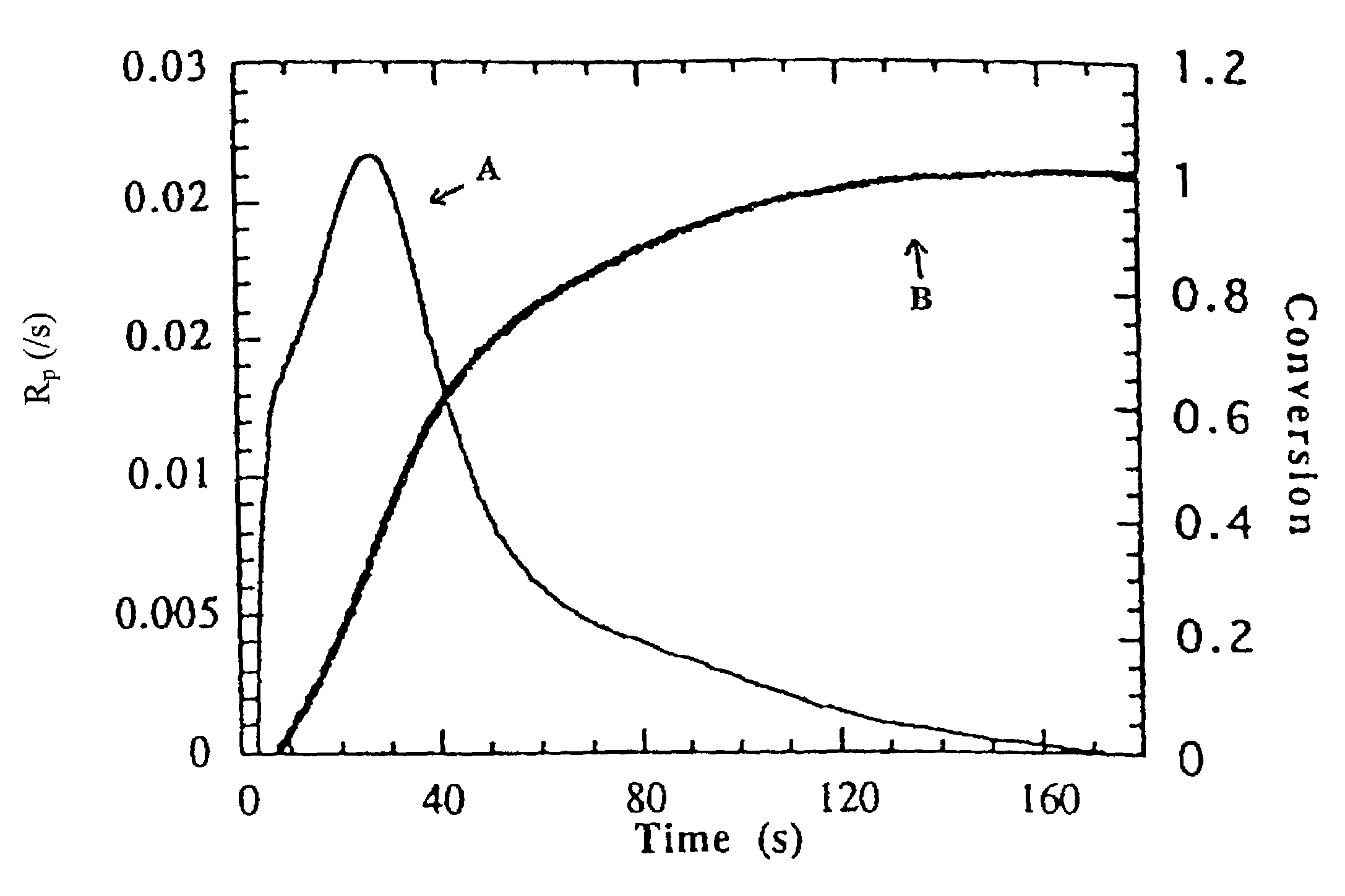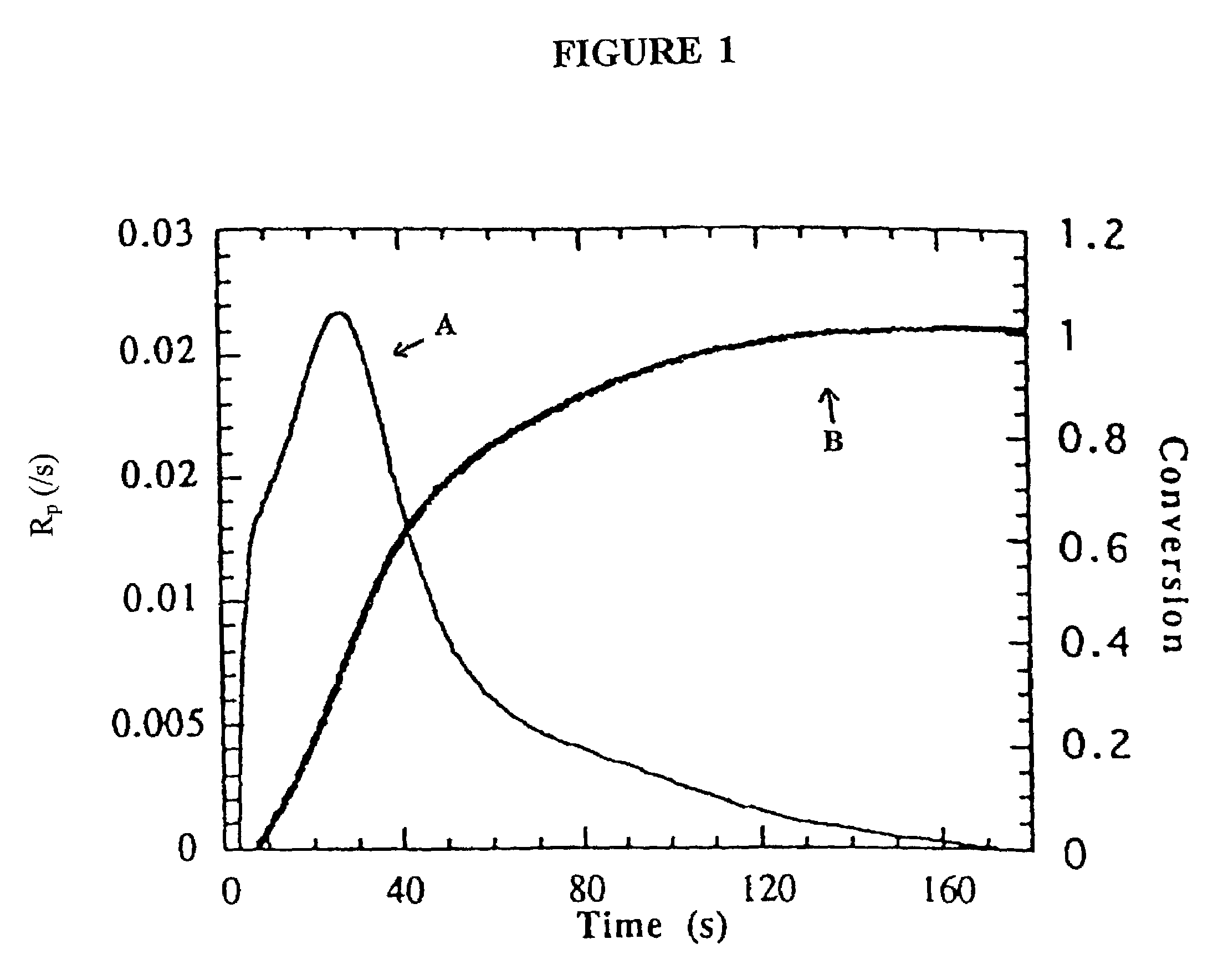Semi-interpenetrating or interpenetrating polymer networks for drug delivery and tissue engineering
a polymer network and semi-interpenetrating technology, applied in the field of semi-interpenetrating and interpenetrating polymer network compositions and photocrosslinkable polymeric hydrogels in medical treatments, can solve the problems of difficult and controversial correction of defects and irregularities, and the need for repair or replacement of highly invasive and painful surgery
- Summary
- Abstract
- Description
- Claims
- Application Information
AI Technical Summary
Benefits of technology
Problems solved by technology
Method used
Image
Examples
example 1
Ex Vivo Experiments
[0088]Ex vivo experiments were performed to obtain quantitative data on polymerization rates and depth of polymerization under skin, fat and muscle.
[0089]First, light intensity was measured in the skin. Skin was harvested from a rat and photopolymerization was tested under the epidermis and dermis with no subcutaneous fat, with subcutaneous fat and intramuscular under the skin and fat.
[0090]
TABLE 1Experimentally measured light intensity at different levels inthe rat skin and the effect of wavelength on the light penetration.Injection SiteUVABlue Light(skin thickness)(% light transmitted)(% light transmitted)Subcutaneous4.0%11.6%(~1 mm)Subcutaneous Fat1.6%4.8%(~1.6 mm)Subcutaneous Fat and0.7%1.9%Muscle(5.0 mm)
[0091]After light intensity was determined, the ability to induce photopolymerization under various thickness skin layers was assessed. Poly(ethylene glycol) (MW 3400, Polysciences, Warrington, Pa.), end capped with a methacrylate group at both ends (Shearwate...
example 2
In Vivo Experiments
[0093]Nude mice were injected subcutaneously with a polymerizable solution containing DMA as described in Example 1 and exposed to UVA light from a tanning bed at an intensity of 3-5 mW / cm2 for four minutes. The resulting hydrogel was palpated and determined to have polymerized from a liquid to a solid. Controls not exposed to light did not polymerize. In order to further confirm polymerization, the mice were sacrificed and the hydrogel and surrounding skin and tissue were excised. Polymerization was confirmed by swelling the hydrogel in water.
example 3
[0094]The cogelation of the methacrylated mixed anhydride of succinic acid and poly(ethylene oxide) and dimethacrylate (PEOD) is useful for extending the release of hydrogels. This increases the crosslinking density of PEO networks. A labile anhydride bond in addition to the ester bonds attaching the methacrylate groups of PEO is present in the resulting hydrogels increasing the mechanisms and rate by which hydrolytic degradation may occur.
[0095]This example describes the creation of a photopolymerized succinic acid anhydride / PEO polymer and release of compounds from this polymer. The example is divided as follows: A) mixing succinic acid with polymerizable methacrylate groups, B) mixing release compound with a polymerizable solution of succinic dimethacrylate and PEOD, C) testing swelling, and D) measuring release over time. PEOD was also cogelled with 1,2-(dihydroxyethylene)bisacrylamide and Diallyl-tartardiamide.
[0096]A. Making Succinic Dimethacrylate (SAD)
[0...
PUM
 Login to View More
Login to View More Abstract
Description
Claims
Application Information
 Login to View More
Login to View More - R&D
- Intellectual Property
- Life Sciences
- Materials
- Tech Scout
- Unparalleled Data Quality
- Higher Quality Content
- 60% Fewer Hallucinations
Browse by: Latest US Patents, China's latest patents, Technical Efficacy Thesaurus, Application Domain, Technology Topic, Popular Technical Reports.
© 2025 PatSnap. All rights reserved.Legal|Privacy policy|Modern Slavery Act Transparency Statement|Sitemap|About US| Contact US: help@patsnap.com



